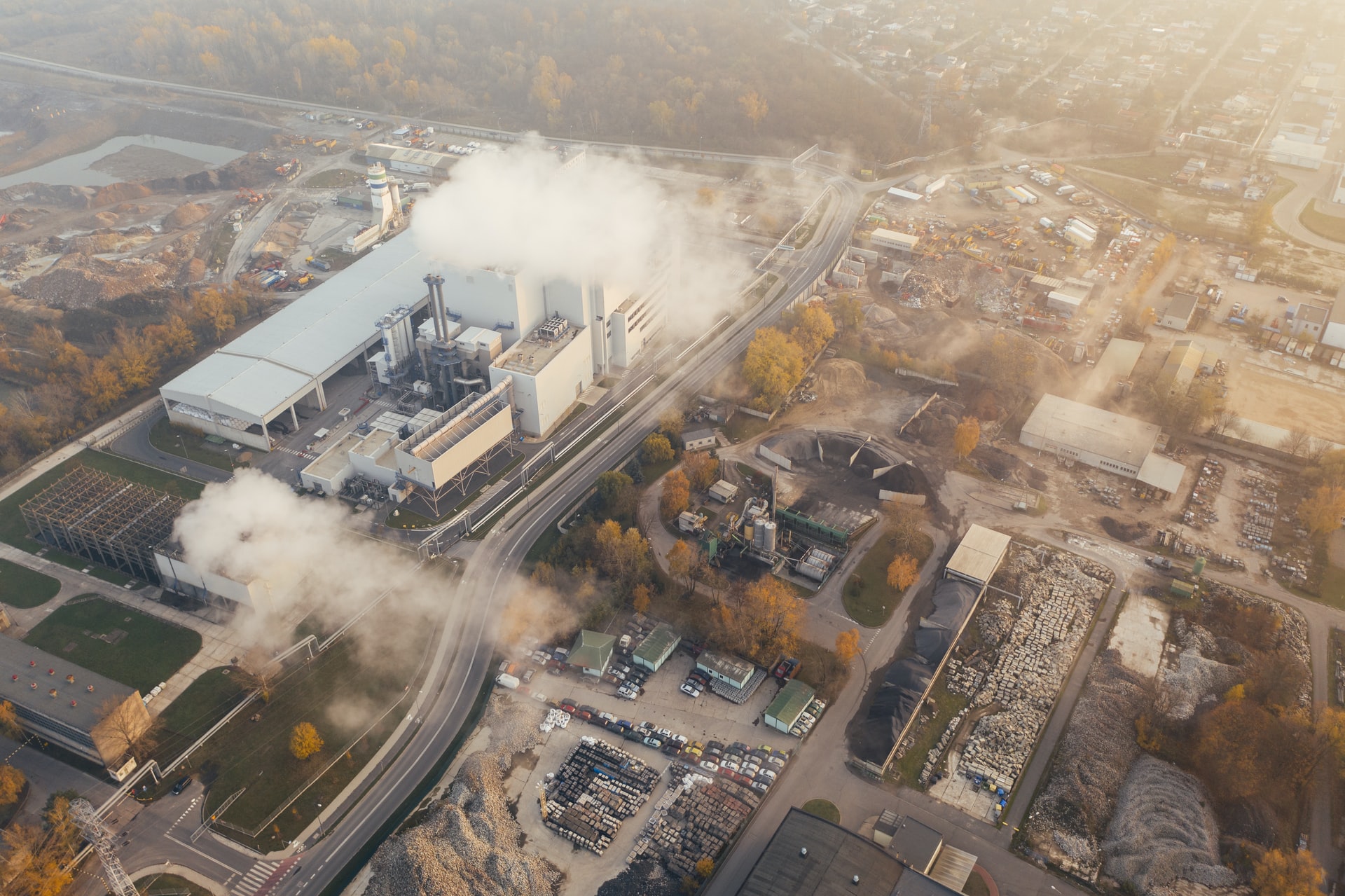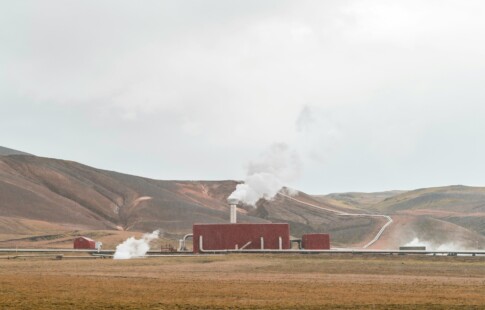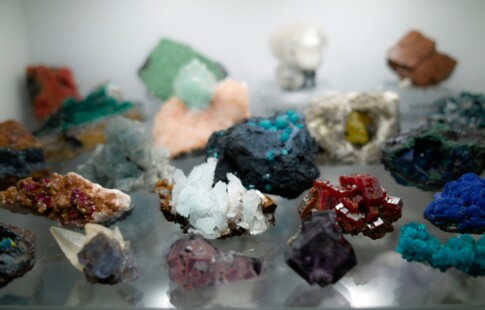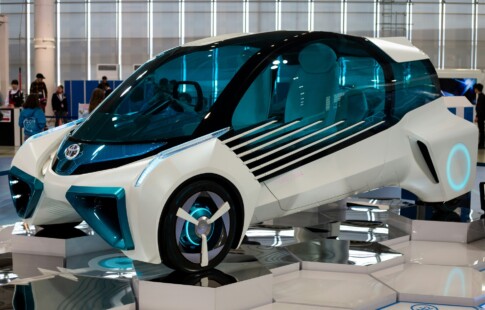
Cleaning Up Emissions: How Does a Scrubber Work?
We are reader-supported. When you buy through links on our site, we may earn affiliate commission.
You may be surprised to hear that the white plumes coming from smokestacks aren’t toxic waste – they’re actually steam. Although some industrial facilities do release toxic particles into the air, they’re generally invisible to the human eye. Visible concentrations of air pollution look like smog, a heavy fog that hinders visibility and makes it difficult to breathe.
As people have learned more about the dangers of air pollution, they’ve developed technologies to clean up toxic industrial processes. One of these technologies is known as a scrubber and it removes toxins from gas to clean smokestack emissions. Keep reading to answer the questions, “How does a scrubber work?”
Types of Scrubbers
Emission scrubbers come in two forms: wet and dry. Both types of scrubbers use natural processes to clean gas of particulates, foul odors and other types of pollution. Although wet scrubbers require water consumption, they can generally remove pollutants at a higher level than dry scrubbers. Dry scrubbers are used very effectively to remove acid from combustion gas.
Wet scrubbers have a wide range of applications. They’re used in wastewater treatments, paper plants, steel mills and industrial fertilizer centers. They’re also used on boats to reduce chemical emissions from burning fuel. Wet scrubbers are ideal for industrial applications that already use water as part of their processes.
There are several different types of wet scrubbers. Venturi scrubbers are one of the most well-known. They send gases through liquid at a high speed that removes pollutants more efficiently than other types of scrubbers. By contrast, impingement-plate scrubbers trap emissions by passing a steady stream of water over gas as it rises inside a chamber.
Scrubbers can be compact or so large that they require a separate building. Some scrubbers are placed inside smokestacks, while others stand adjacent to them and are connected with industrial piping. The ideal setup for a scrubber depends on the type of emissions it’s collecting and the layout of a specific industrial plant.
How Does a Scrubber Work?
All scrubbers harness natural principles like gravity and steam to clean gas emissions. Scrubbers are engineered to minimize interference with other industrial processes. For example, many scrubbers are advertised as having a “low-pressure drop.” This means that they maintain the pressure of gas throughout the scrubber system to keep energy needs low.
Both wet and dry scrubbers send gas through a chamber with a number of filters to remove pollutants. In dry scrubbers, dry material reacts with the gas and removes dangerous particles before the air escapes the plant. Wet scrubbers use water and other liquid solvents to capture particles and drain them away. Here are some examples of chemicals that scrubbers clean from the air:
- Chlorides
- Fluorides
- Sulfur dioxide
- Volatile Organic Chemicals (VOCs)
- Soot
- Smoke
- Hazardous air chemicals (HACs)
Most wet scrubbers combine misters with additional water filters to remove particles from gas and then weigh down contaminated droplets. Polluted droplets wash out of a lower pipe while the purified gas continues to expand and travels through a high pipe in the scrubbing chamber. By the time steam exits a smokestack, dangerous particles have been removed from the air.
Sometimes, just using water in a wet scrubber is enough. The electrical charge of the fluid attracts contaminating particles and removes them from the gas. However, many industrial plants combine water with other liquid solvents like limestone and activated alumina. The best liquid solution depends on which pollutants need to be removed from the gas.
Issues With Pollution Scrubbers
According to the EPA, wet scrubbers are able to remove 95% of particulate matter from industrial gases. This reduces acid rain, protecting the environment and human health. However, once pollutants are removed from gas, they must be stored or recycled into a new form. Some companies process the sludge from scrubbers and turn it into synthetic drywall.
However, most of the toxic waste from industrial scrubbers is stored in special sealed containers that are placed in landfills. If pollutants are stored improperly, they can leach into groundwater and pollute the ecosystem from below. Removing pollutants from gas doesn’t eliminate them entirely from the environment.
Unfortunately, not every industrialized plant uses scrubbers. In 2018, the EPA reported that 30% of U.S. coal plants didn’t incorporate scrubbers into their industrial processes. Adding scrubbers to an industrial plant is expensive, so many facilities in the developing world don’t use scrubbers either. Poor waste management can render scrubbers useless in countries that do use them.
Although many ships use scrubbers, some of them dump polluted wastewater directly into the ocean. Although the shipping industry claims to be following international guidelines, many environmentalists are alarmed about the impact of this polluted water on animal life and the global ecosystem. It seems that in some cases, scrubbers aren’t helping the environment at all.
How Does a Scrubber Work?
Scrubbers use wet and dry filters to remove environmental toxins from industrial emissions, protecting the environment and human life. Without scrubbers, the air quality in industrialized areas would be much worse. By keeping contaminants out of the air, scrubbers reduce acid rain and benefit entire ecosystems.
However, scrubbers aren’t a perfect solution for toxic waste. Although they keep pollutants out of the air, they generate toxic sludge that must be recycled or stored underground. In some cases, this sludge is dumped directly into the ocean. New innovation is needed to ensure industrial activity doesn’t pollute the air or the water.
Share on
Like what you read? Join other Environment.co readers!
Get the latest updates on our planet by subscribing to the Environment.co newsletter!
About the author

Jane Marsh
Starting from an early age, Jane Marsh loved all animals and became a budding environmentalist. Now, Jane works as the Editor-in-Chief of Environment.co where she covers topics related to climate policy, renewable energy, the food industry, and more.





